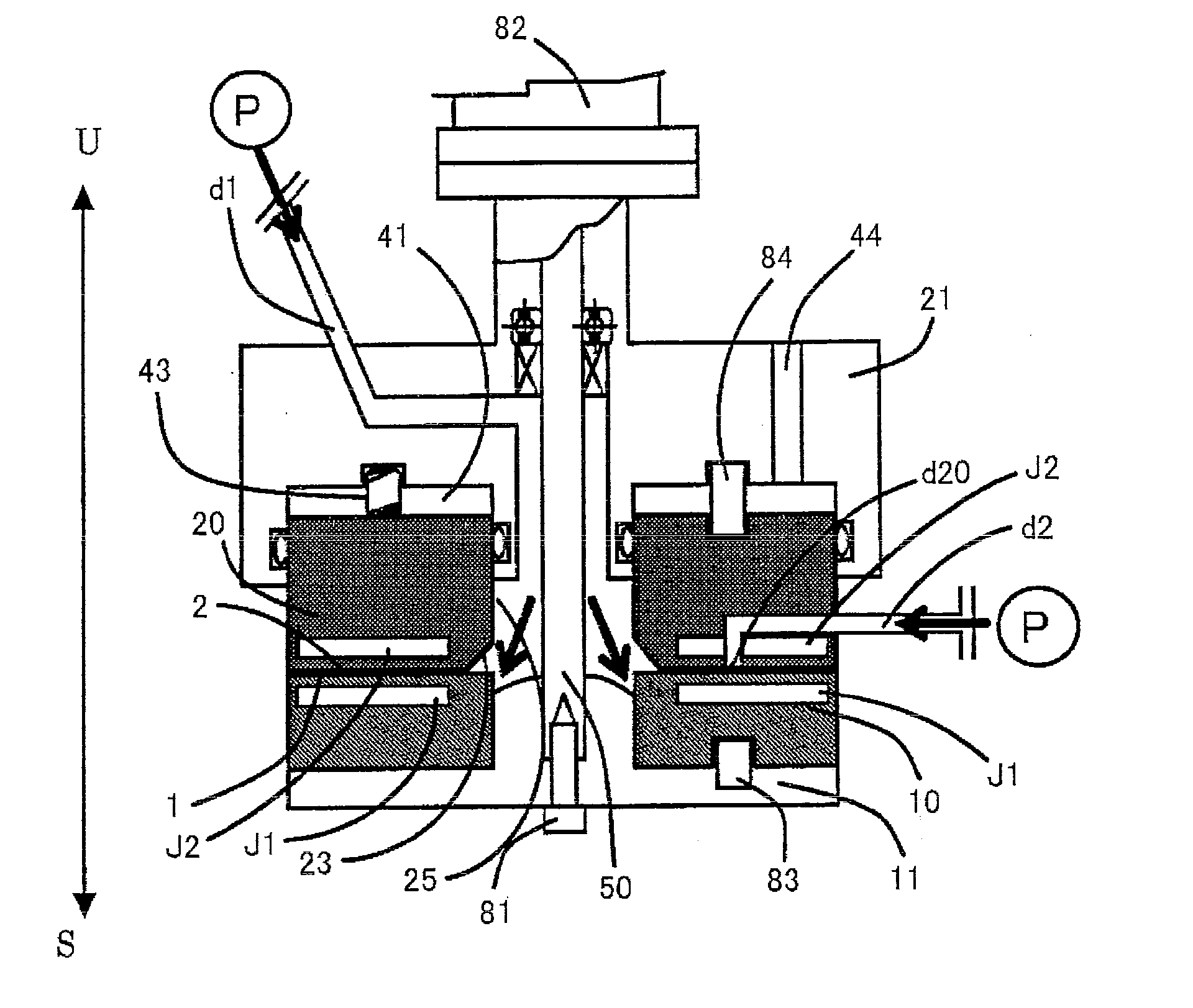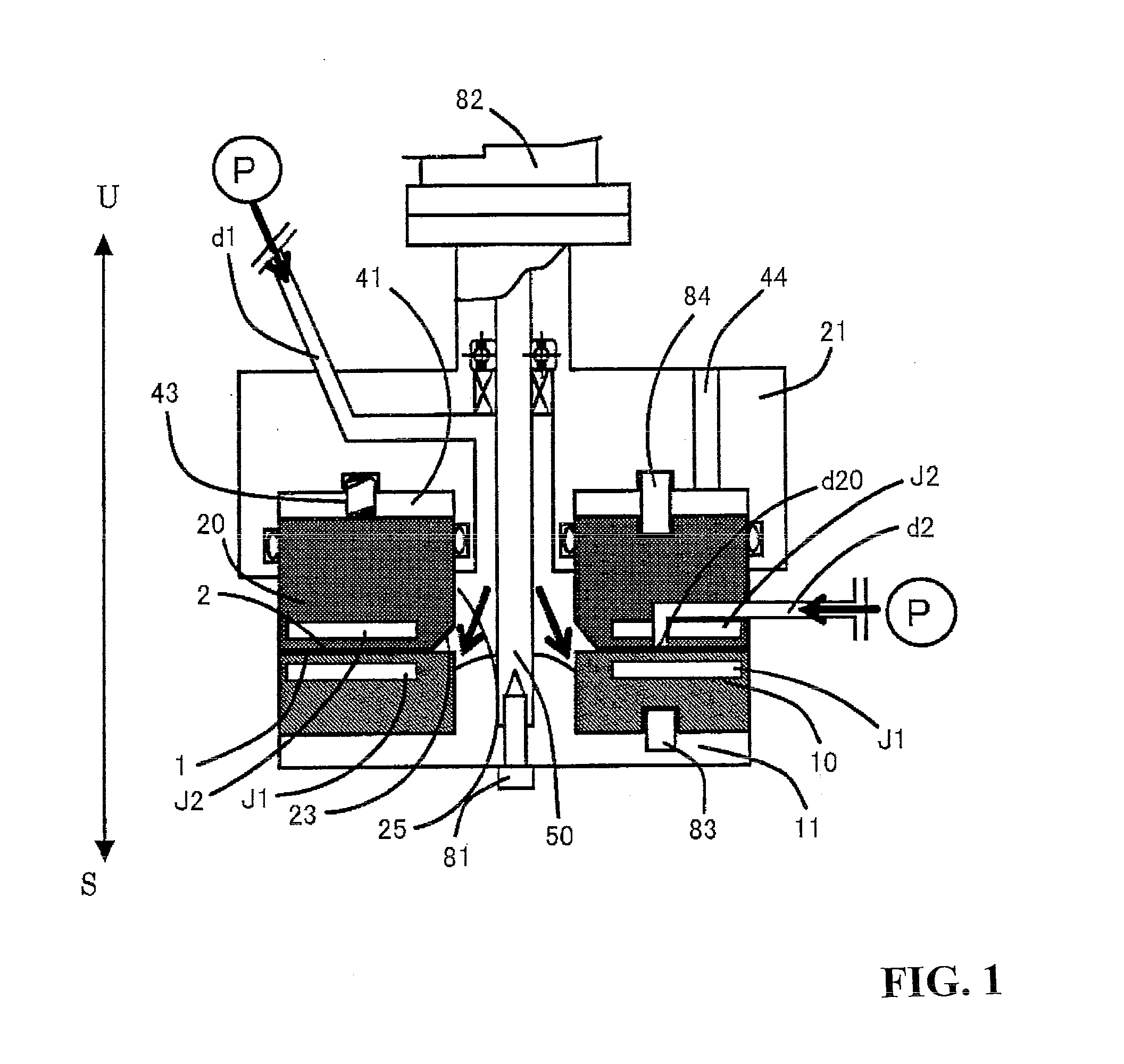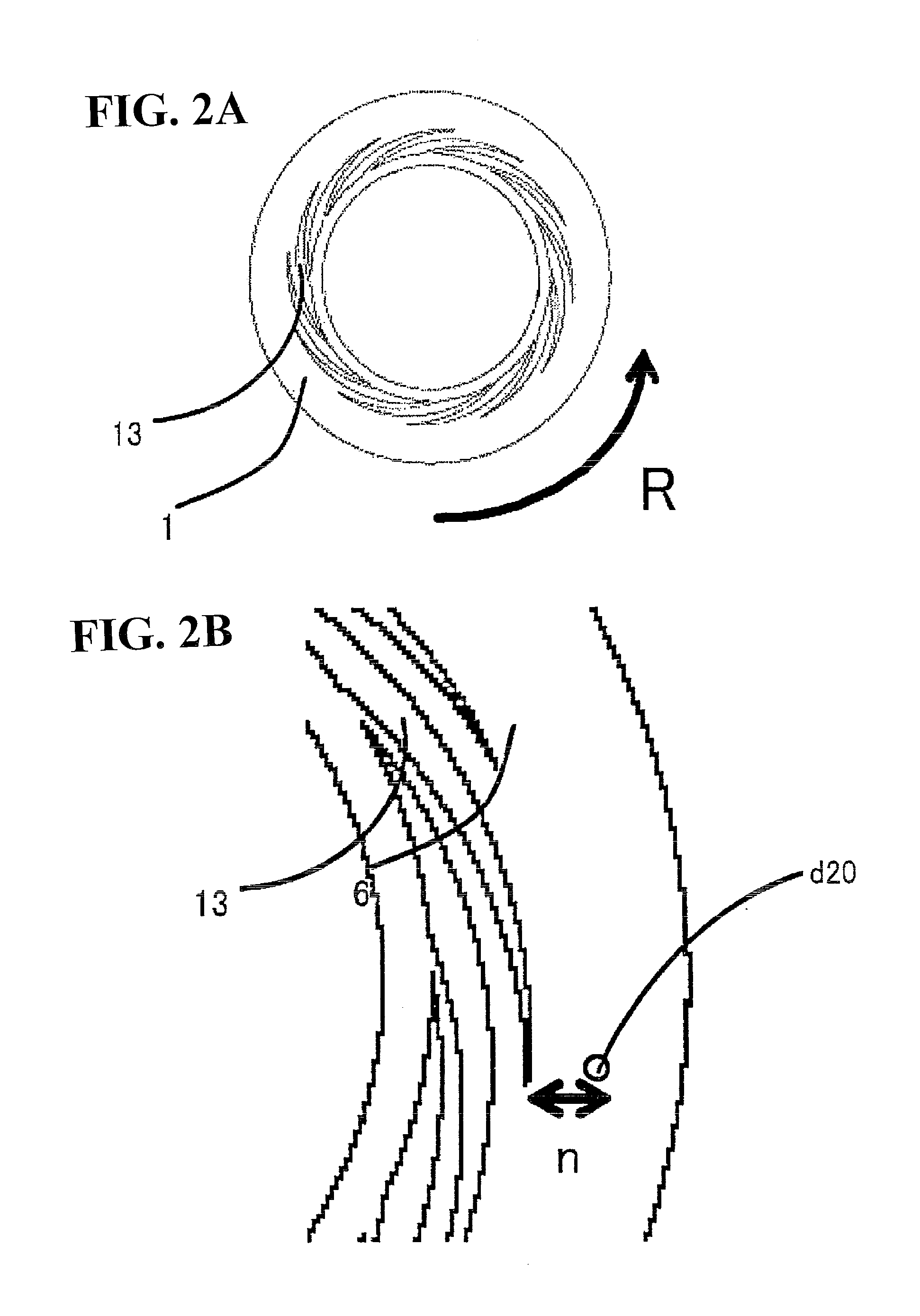Fluid processing apparatus and processing method
a technology of processing apparatus and fluid, which is applied in the direction of machine/engine, grain treatment, pipe heating/cooling, etc., can solve the problems of affecting the flow path of microwaves, the inability of pumps to make it possible to feed fluid, and the number of devices
- Summary
- Abstract
- Description
- Claims
- Application Information
AI Technical Summary
Benefits of technology
Problems solved by technology
Method used
Image
Examples
Embodiment Construction
[0095]Hereinafter, preferable embodiments of the present invention will be described with reference to the drawings. FIG. 1 is a schematic sectional view of a fluid processing apparatus wherein materials to be processed are reacted between processing surfaces, at least one of which rotates relative to the other, and which are capable of approaching to and separating from each other. FIG. 2(A) is a schematic plane view of the first processing surface in the apparatus shown in FIG. 1, and FIG. 2(B) is an enlarged view of an important part of the processing surface in the apparatus shown in FIG. 1. FIG. 3(A) is a sectional view of the second introduction path, and FIG. 3(B) is an enlarged view of an important part for explaining the second introduction path.
[0096]In FIG. 1, arrows U and S show upward and downward directions respectively.
[0097]In FIG. 2(A) and FIG. 3(B), arrow R shows the direction of rotation.
[0098]In FIG. 3(B), arrow C shows the direction of centrifugal force (radial ...
PUM
 Login to View More
Login to View More Abstract
Description
Claims
Application Information
 Login to View More
Login to View More - R&D
- Intellectual Property
- Life Sciences
- Materials
- Tech Scout
- Unparalleled Data Quality
- Higher Quality Content
- 60% Fewer Hallucinations
Browse by: Latest US Patents, China's latest patents, Technical Efficacy Thesaurus, Application Domain, Technology Topic, Popular Technical Reports.
© 2025 PatSnap. All rights reserved.Legal|Privacy policy|Modern Slavery Act Transparency Statement|Sitemap|About US| Contact US: help@patsnap.com



